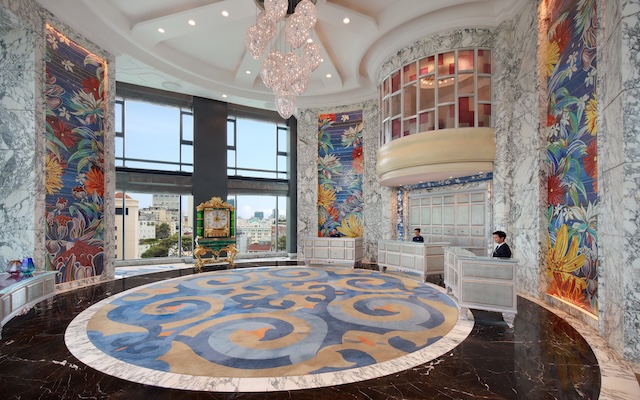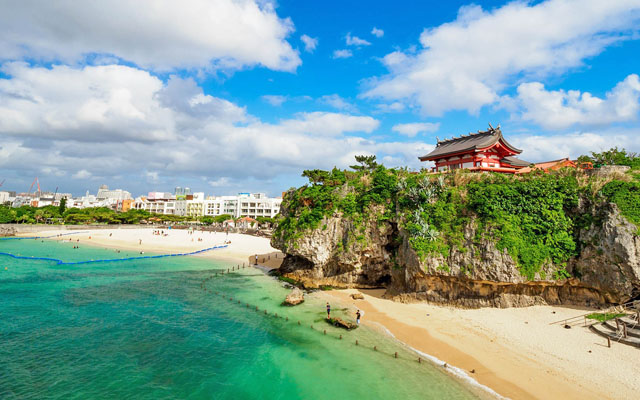Anoma Hospitality Group, with dhp Toshi Kaihatsu and Marriott International’s The Luxury Collection, will open the San’in region’s first five-star resort in 2028 near the Tottori Sand Dunes. CEO Allan Takahashi shares how he’s promoting both the hotel and Tottori to boost their appeal to domestic and international travellers
 What sparked your interest in the sand dunes?
What sparked your interest in the sand dunes?
About 40 years ago, I came to visit a friend in Tottori and we went to see the sand dunes. It’s an image I will never forget. Since then, the idea of building a hotel there has always been in the back of my mind. When I joined this company in 2018, I had an opportunity to work with a developer who was looking for some sites in Tottori. I found a site near the sand dunes that was owned by the city, joined the bid and secured the land. However, Covid hit so plans got delayed, but we’re ready to break ground in January 2026 and hopefully open the 108-room property by the end of 2028.
What are your expectations for the hotel?
The hotel will be in a one-and-only location – the only five-star property where every room offers a view of the sand dunes. No other hotel can be built in the area because the sand dunes are on the western edge of San’inkaigan National Park. In the first year of operations, we expect 70 per cent of our guests to be Japanese, with 30 per cent coming from international markets. In the second, third and fourth years, we think that the numbers will be 50/50 as the city will appeal to a lot of people from overseas.
There are a lot of attractions in addition to the sand dunes. With no lights at night, the sky is filled with millions of stars, which makes for a spectacular sight. The hotel will feature a star-gazing platform on the bridge connecting its two sections, providing daytime views of the sand dunes.
You’re involved in raising awareness of the location, aren’t you?
We’re working on a collaboration with the UK for World Sand Dunes Day, an international awareness day to highlight the importance of sand dunes and their ecosystems. I want to build recognition for Tottori’s sand dunes through this international event.
And you’re also promoting the city. Why is that?
Most people don’t know what Tottori has to offer. It’s our job as hoteliers to promote it, to show the city to Japan and the world. Foreign tourists to Japan don’t really know places outside Tokyo, Kyoto, Osaka and so on. The real Japan is outside of those areas. Also, Tottori has the smallest population of all prefectures in Japan so a lot of major brands don’t pay attention to it. Tottori needs help from hoteliers and other industries to get on the map, grow, and compete with other places.
What excites you about Tottori?
Aside from the sand dunes, Tottori has a lot of things to offer, like the Uradome Coast, where you can take a glass-bottomed boat to see rock formations, and Misasa Onsen, home to one of the most radioactive springs in the world, which has healing powers. Other interesting sites include Nageiredo Hall, clinging to the cliffside of Mount Mitoku, and Kurayoshi, home to old wooden houses converted into restaurants. And there’s the food. Both shabu-shabu (hotpot) and wagyu started in Tottori. The ocean offers Matsuba crab from September to March and squid in the summer, while the area is also famous for its pears, sake, and whiskey.
How will you showcase Tottori at the hotel?
We will create experiences and events for guests in areas such as food, culture, and more. We’ll do classes to make local crafts such as washi paper and Tottori’s renowned black and green lacquerware that we can fire and send to guests in Japan or overseas.
We’ll also have tours to places like Misasa Onsen, Kurayoshi, Nageiredo Hall and the port of Sakaiminato, where they pull up seafood every morning. These are the kinds of things we need to do to make the prefecture stand out. We’ll organise these tours with local ground transportation companies and probably buy or lease a fleet of high-end cars and even pick guests up from the airport.
What challenges do you face?
Human resources. However, younger people in the area, as well as those who may have left Tottori, might be interested in working at a luxury hotel in their hometown. We are also considering training some of our staff from our hotel company in Indonesia in Japanese, and bringing them over to work for three to five years as a reward. We’ve got our sister company too, with 22 hotels all over Japan, so some of their staff might join us. But it will be challenging, particularly when it comes to the English language aspect.
Another challenge is making it easier for international customers to visit. Tottori is only a one-hour flight from Tokyo, but there are no direct flights from Osaka – just a 2.5-hour train ride. We may suggest that international visitors fly into Tokyo, spend a few days in Tottori, then travel by train to Matsue to explore Matsue Castle and the Adachi Museum of Art, followed by a visit to Izumo Taisha Shrine. From there, they can head to Hiroshima or Okayama before departing Japan from Kansai International Airport.
We look forward to welcoming all travellers to the hotel.

















